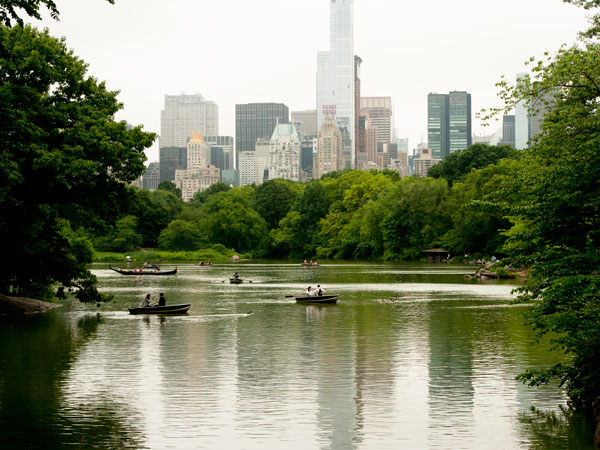Social Studies Lesson | 10 Parks that Changed America Curriculum
Social Studies Lesson
The history of parks in or near your community


Overview
In this lesson, students will work together to research the history of a nearby urban park to learn when and why it was built, and then create a PowerPoint presentation about it.
Time: 3 periods
Standards
This lesson addresses selected themes from the McRel History Standards
- Standard 16: Understands how the rise of corporations, heavy industry, and mechanized farming transformed American society.
Level III: Understands various influences on the scenic and urban environment
Level IV: Understands issues associated with urban growth in the late 19th century (e.g., how city residents dealt with urban problems) - Standard 17: Understands massive immigration after 1870 and how new social patterns, conflicts, and ideas of national unity developed amid growing cultural diversity.
Level III: Understands changes in American life in the late 19th century
Level IV: Understands changes in social and class development in late 19th century America (e.g., Victorianism and its impact on architecture, literature, manners, and morals)
Preparation
To prepare to teach this lesson, teachers should:
- Watch the Central Park and Chicago Neighborhood Parks segments from the PBS special 10 Parks that Changed America, on DVD or online.
- Review the lesson plan.
- Print out copies of the four different worksheets: park design, park designers, park history and park impact.
Lesson
Materials:
- Copies of worksheets (for different groups)
- Laptops, computers, or tablets with Internet access
Period 1
- Watch the segments about Central Park and Chicago’s Neighborhood Parks from the PBS Special 10 Parks that Changed America. Discuss why parks became important to America’s cities in the late 19th and early 20th centuries. Explore the differences and similarities between Central Park and the Chicago Neighborhood Parks. Draw a Venn diagram on the board or Smart Board to compare the two. (E.g., similarities: both designed by an Olmsted, needs of immigrants, response to industrializing city. Differences: one, central location compared to various locations throughout the city; no buildings compared to buildings; no play equipment or recreational fields compared to many; no social services provided as compared to bath houses, meals, health care, etc.) Ask students to consider the idea that the Chicago Neighborhood Parks were an outgrowth of an experiment that began with Central Park decades before.
- Tell students that they are going to research the history of an urban park in or near their community to determine why and when it was built. Then they are going to take the information they learned and make a PowerPoint presentation about it, and present to the class as a group. With the students, brainstorm a list of suitable parks to study. (Since the theme of this lesson has to do with the urban industrializing landscape of the late 19th century, try to pick a park that will fit this theme, if possible.) Choose one park for the entire class to study.
- Divide students into four groups. Each group will explore a different theme about the park and will be given the appropriate worksheet to help them prepare an outline for their PowerPoint.
- Distribute worksheets. Students use the Internet to work through the answers. If they can’t find the answers, they may leave a space blank.
Period 2
- Students work with their group to choose images from the Internet for their PowerPoint presentation.
- Using the planning worksheet from the previous lesson and the images, students prepare their PowerPoint presentation.
Period 3
- Students present their sections of information as a group about the local urban park. Each group should present for about 10 minutes.
EXTENSION: If possible, take students on a field trip to the park that the class has studied.
Additional Resources
Books
- The Politics of Park Design: A History of Urban Parks in America by Galen Cranz
- Public Parks: The Key to Livable Communities by Alexander Garvin
- Chicago’s Parks: A Photographic History by John Graf
- City Parks: Public Places, Private Thoughts, by Catie Marron
- The Park and the People: A History of Central Park by Roy Rosenzweig and Elizabeth Blackmar
Online Sources
- City Parks Alliance
www.cityparksalliance.org - Urban Parks of the Past and Future article
http://www.pps.org/reference/futureparks/ - Chicago Park District
www.chicagoparkdistrict.com - Central Park
www.centralparknyc.org
For Further Study
This Social Studies lesson can be extended to other subjects or paired with other 10 Parks that Changed America lessons to create the following interdisciplinary connections:
- Art: Paint (using watercolors, oil, or acrylics) en plein air, ideally in a park or natural setting. Part of the late-19th century response to the rapid urbanization of America’s cities was an interest in–and focus on—nature, particularly among many artists (e.g., the Hudson River School).
- Mathematics: Take a tree survey at a local park or even on the school’s block. Determine how many pounds of carbon dioxide each tree sequesters each year. You may use this website and fact sheet: http://www.americanforests.org/discover-forests/tree-facts/
- Science: In the Chicago neighborhood parks, patrons could take a bath at the bathhouse and were given a bar of soap. Either through a class discussion or an essay, explore the link between sanitation and good health. Why were the Chicago neighborhood parks built with this amenity?
- ELA: Write the script for a guided walking tour of the park you focused on, based upon the historical information learned in this Social Studies lesson. If feasible, give the tour.

